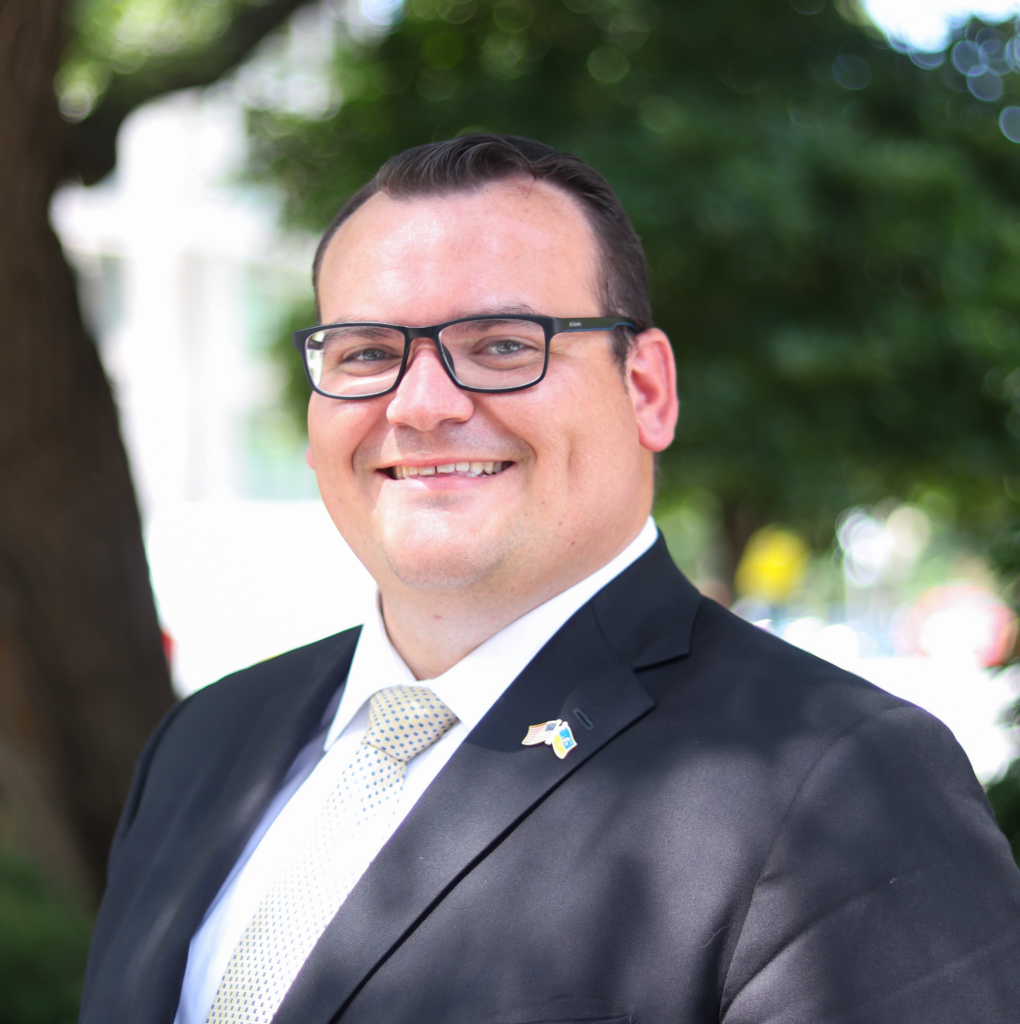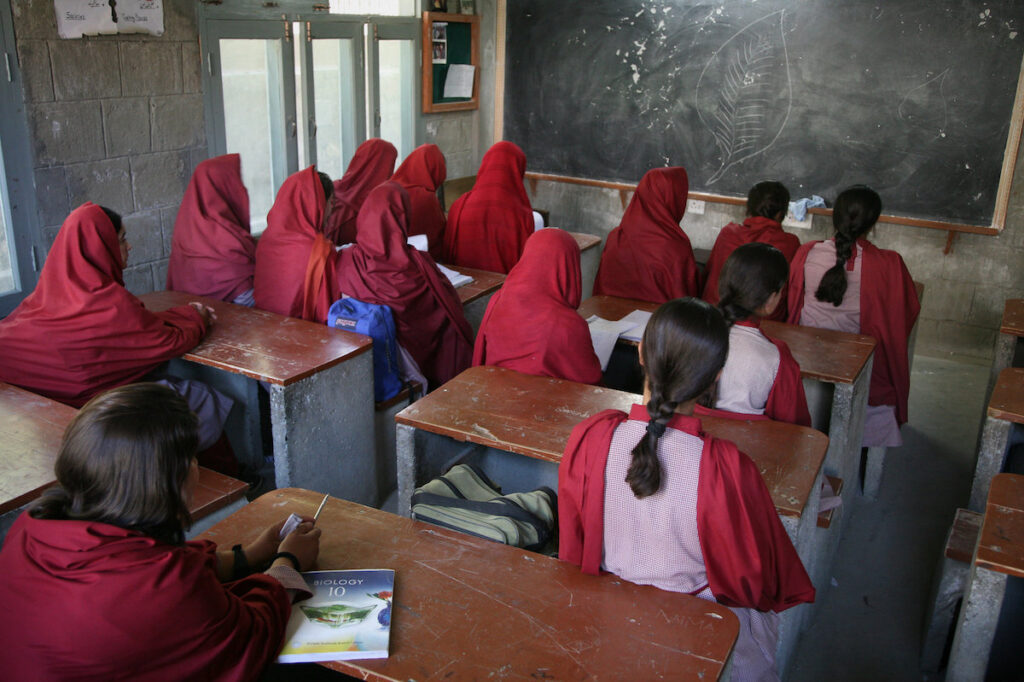Hastings, Nebraska: A Catalyst for Global Connections
“Hastings isn’t just 13 square miles and 25,000 people. We’ve got a lot of great things going on here. What happens halfway around the world certainly does matter to us here at home,” says Hastings Mayor and USGLC Nebraska Advisory Committee Member Corey Stutte. The birthplace of Kool-Aid and once home to the largest Naval Ammunition Depot in the United States during WWII, the mid-sized community of Hastings, Nebraska stands as a great example of how small towns across the American Heartland can have big impact in the world around them. The U.S. Global Leadership Coalition traveled to Hastings for conversations with Mayor Stutte, Hastings Economic Development Corporation (HEDC) Executive Director Michael Krings, and former Hastings College Professor Sharon Brooks on the importance of U.S. global engagement and leadership and why what happens globally has an impact on their community’s success and prosperity.
Manufacturing and Agriculture Forge the Path
Situated 25 miles south of Interstate 80—Nebraska’s main arterial interstate—the historically agricultural community of 25,000 is home to a vibrant private college and several manufacturing facilities which do business with the world, including T-L Irrigation, Bruckman Rubber Co., Trane Technologies, Thermo King, and Flowserve. These critical businesses not only provide jobs to the Hasting’s community and help contribute to the Nebraska economy, they are some of the bridges that make the heartland a vital part of global stability.
“We live in an agricultural state and what we do here feeds the world,” says Mayor Stutte. Of Nebraska’s over $8 billion of exported goods, $7.1 billion comes from agricultural exports. Hastings’ deep roots in agriculture make it part of the network of farmers, ranchers, and agribusinesses which help contribute to the Nebraska economy and help advance America’s global effort to combat hunger and poverty. One such agribusiness is a new joint venture between Cargill and affiliates of The Love’s Family of Companies called Heartwell Renewables, which is “the single largest private investment this community [Hastings] has seen,” says HEDC’s Michael Krings. When completed, this state-of-the-art biofuel facility will be the only one of its kind to both produce and market renewable diesel from beef tallow, with the finished product being retailed at pumps across the country and the world – making Hastings a cutting-edge community for the future of the renewable energy business.
A Higher Education Institution Catalyst
Another example of Hastings’ international ties is the college which bears the city’s name, Hastings College. For a small school of just over 900 students founded in 1882 by men and women seeking a Presbyterian college dedicated to high academic and cultural standards, Hastings College has been the focal point of many of Hastings’ ties to the world around it. The college boasts a handful of notable alumni including Mayor of Denver, Colorado Michael Hancock; Ambassador Milan D. Bish (Barbados, Dominica, St Lucia, Antigua, and St. Vincent), former U.S. Congressman Tom Osborne (and University of Nebraska Cornhuskers football coaching legend), Clayton Anderson, Nebraska’s first and only astronaut and USGLC Nebraska Advisory Committee Member, and Yoo Chang-soon, former prime minister of South Korea.
In addition to the international students the college attracts – contributing to a total of over 5,320 international students per year across Nebraska’s colleges and universities all of whom boost the Nebraska economy by an estimated $166 million – the college stands as a catalyst for international interactions within the community of Hastings.
Long Standing Relations with Ozu, Japan
Of these interactions, two are marks of a rich history of international ties. The first is a historic sister city relationship between the community of Hastings and Ozu, Japan. Following a trip to Ozu in 1995, a group of Hastings citizens established the Hastings International Exchange Organization (HIEO). The entirely volunteer organization maintains the community’s connection with Ozu and organize yearly summer visits where Ozu Public School students experience the community of Hastings as community members, often staying with families across the community. The goal of this yearly effort is to foster international understanding and education between different cultures. “It’s a connection among the high schools, the college students, and the community—medical folks, education folks, business folks—who have gone… and been able to just absorb each other’s cultures,” says former Hastings College Professor Sharon Brooks. Hastings College has played an important role in this relationship and has sent several students to Ozu to study abroad as well as has been the home for Ozu students attending the college for four-year degrees. On Hastings College campus there is a Japanese Friendship Garden which was designed and built by master gardeners from Ozu using funds donated by Hastings’ residents.
Korean Freedom Fighters
The other interaction took place between 1910 and 1914 where Korean freedom fighters used Hastings College as a summer training ground after their native country was annexed by Japan. The camp, organized by Korea’s first President Dr. Syngman Rhee, was selected after missionaries spread the word about Hastings and other faith-based colleges to independence leaders in Korea. In between military trainings sessions where broomsticks were used as weapons, the young freedom fighters took English lessons and studied the bible. In recognition of Hastings College’s role in Korean independence from Japan, the Republic of Korea dedicated a monument to the college in 2002.
From its impact on the Nebraska economy to a community hungry to learn about the world around it, Hastings, Nebraska stands as more than a rural community of just 13 square miles–it stands as a prime example of why America’s global leadership matters locally.




